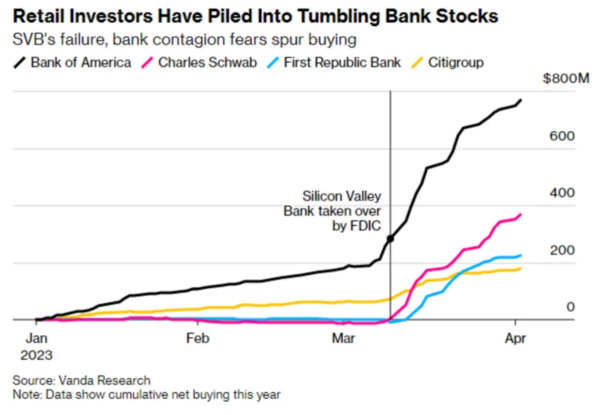Online for 27 years
Hi! If you’re dropping by, most of my writing these days is still on my Substack Newsletter.
And 27 years… that number is getting unnervingly close to 3 decades.
Hi! If you’re dropping by, most of my writing these days is still on my Substack Newsletter.
And 27 years… that number is getting unnervingly close to 3 decades.
The first half of 2024 was the most active I’ve been travel-wise in the last 5 years, hitting places on 4 continents. I’m clearly not the only one – travel is now expensive again, with planes going out full, hotel prices ballooning, and award redemptions for premium cabins becoming very scarce.
I’m looking forward to the trips we have planned so far in 2025, especially a trip to France where a friend is renting out a villa in Provence to celebrate a milestone birthday.
Sydney, Australia
Honolulu, HI
Las Vegas, NV
Singapore
Dallas, TX
Kaufman, TX †
Copenhagen, Denmark
Billund, Denmark
Stockholm, Sweden
Palm Springs, CA
All places had overnight visits, unless marked with †.
* Multiple entries, non-consecutive days.
† Daytrip only.
‡ New country or territory.
This site has now been online for 26 years. If you’re dropping by, most of my writing these days is on my Substack Newsletter.
2023 can probably be considered to be the first full year in the post-pandemic era, with the travel industry roaring back to levels that exceeded 2019. I did a modest amount of traveling in 2023. Apart from one work trip to Napa, all the traveling was for fun. The two international trips we did centered around visiting our extended family, and also gave me the opportunity to visit two new countries/territories: Fiji and Greenland. 2024 is looking like it will involve an amount of travel that’s back to pre-pandemic, post-kid, norms for me – at least for the first half of the year.
Sydney, Australia *
Pacific Harbour, Fiji ‡
Carmel, CA
Monterey, CA
Aptos, CA
Copenhagen, Denmark *
Kangerlussuaq, Greenland ‡
Ilulissat, Greenland
Ilimanaq, Greenland
Napa, CA
Kiama, Australia †
All places had overnight visits, unless marked with †.
* Multiple entries, non-consecutive days.
† Daytrip only.
‡ New country or territory.
You can find them all at my Substack Newsletter. I stopped mirroring the newsletter here, so subscribe directly to the newsletter instead.
We’ve been on holiday. Here are a few photos:
Write up to come…
Further Observations
🧵 versus 🐦
Further Observations
This maths lecture, “A world from a sheet of paper” by Stanford Professor Tadashi Tokieda is very engaging:
https://www.threads.net/t/CuP48CiS5sx/
https://www.threads.net/t/CuYcHxWOnKn/
Hubris and the Deep Sea
The loss of the Titan, the submersible operated by a private company carrying five people attempting to view the Titanic, has captured the world’s attention for most of the week. After a multi-day search, vessel fragments found on the sea floor mean that the Titan had a catastrophic structural failure and imploded. Mercifully, it would have happened so rapidly that the passengers wouldn’t have realized what was happening.
Top 5
One reason attributed to declining birth rates in developed economies is a reluctance to bring children into a world that feels increasingly messed up. I periodically think about what kind of world my kids will be living in when they reach their 50s, by which time it will be the 2070s. Here is what I think are the most significant global generational issues that will dramatically shape how things unfold in the coming half-century:
Not making the list for me (yet) are AI, dwindling natural resources, interplanetary travel, and the impact of social media. Disagree with the list? Am I missing anything?
Further Observations
Hasan Minhaj interviews Barack Obama:
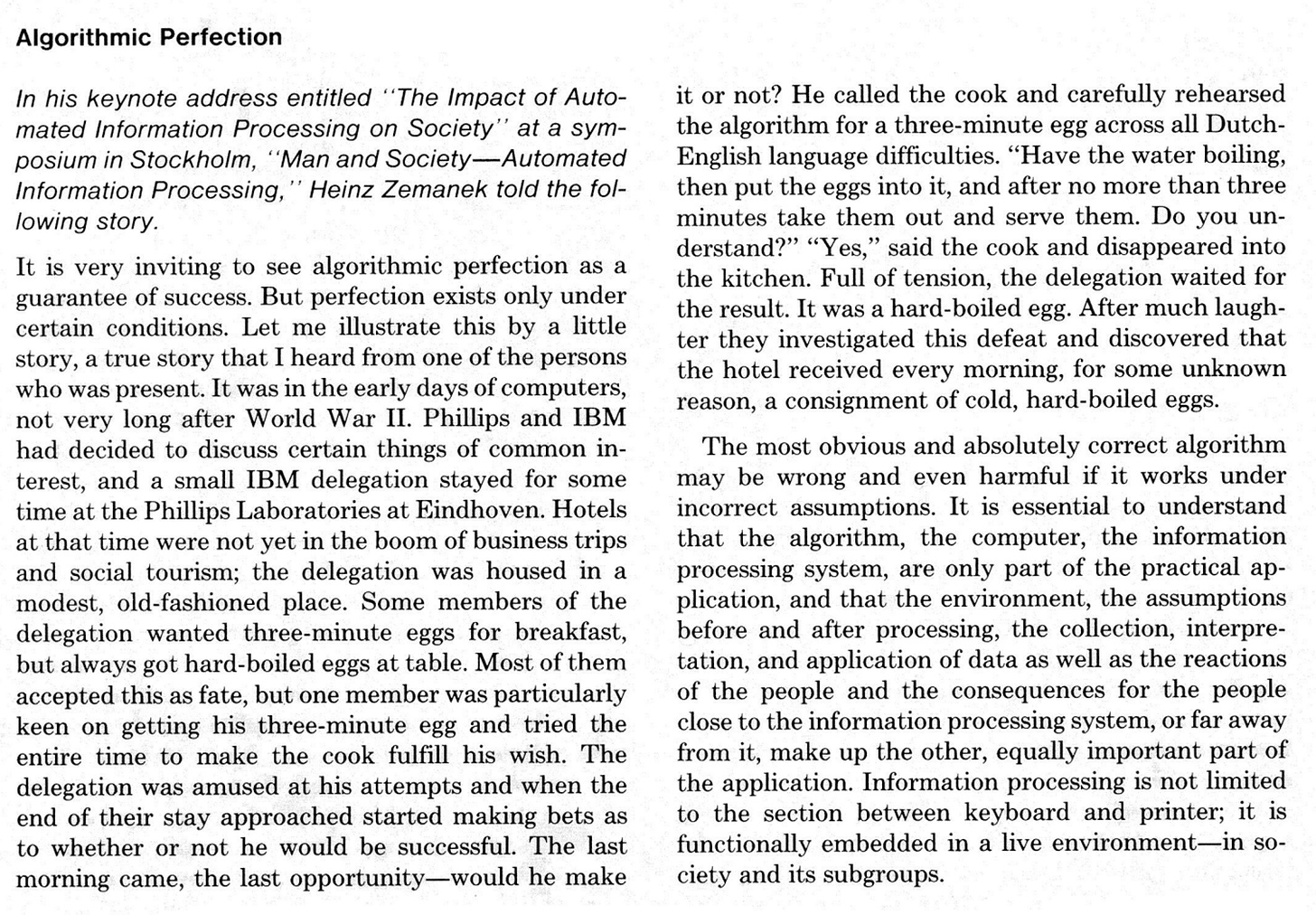
Vision Pro
Apple launched its $3,499 Vision Pro AR/VR headset on Monday. With sales tax, the price will be closer to $3,850 where I live. If you wear glasses, like myself, you have to buy additional lenses that magnetically attach to the device. I imagine those will cost a few hundred dollars.
Nonetheless, as long as Apple decides to continue developing the product, we can expect the Vision Pro to get cheaper and smaller over the years. They’ll probably release a non-pro Apple Vision at some stage.
My take? The Vision Pro probably represents the best shot this decade at seeing whether AR/VR is ready for widespread daily adoption (if it ever becomes ready — I’m doubtful).
As I wrote last week, the promise of AR/VR is mainly hamstrung by the hardware. For example, if I could magically have some of the functionality of the Vision Pro in the glasses I already wear (kind of like a heads up display), without materially increasing their weight or looking dorky, I’d be more willing to stand in line for it.
What we have today with the Vision Pro is the best mass-production headset that you can design with today’s technology. It’s entirely controlled by voice and hand gestures, so you don’t have to lug hand controls (the VR world’s equivalent of the stylus) around like most other headsets. Apparently the eye tracking is pinpoint accurate. The battery has been offloaded to an external battery pack you stick in your pocket, ostensibly to reduce the weight of the headset and thus user fatigue. The screen resolution is the best in the industry. They try to mitigate the issue of being blocked off from the physical world by including a creepy simulated-eyes display in the front, and giving the user the ability to control how much of the outside world they want to see. Because wearing glasses degrades the experience, they require glasses wearers to buy special Zeiss lenses that attach to the device and use those instead. They even have a solid approach to privacy (advertisers can’t do analytics on where you’re looking).
The headset is far from perfect. Reports are that the headset will still starts to feel uncomfortable after some period of use. The corded external battery is still something extra to lug around. But let’s acknowledge for a moment that there is an incredible amount of technology packed into this thing. It’s been pointed out that it represents the culmination of all the different things that Apple has been working on in its other products — from the Apple Watch’s digital crown to the iPad’s Lidar, to the iPhone’s TrueDepth camera for Face ID, and the M2 chip — and then some.
Who knows if it will find meaningful traction? We’ll find out next year.
Some additional random thoughts:
Earning Airline Miles for Interest
Bask Bank offers a savings account that pays interest not in cash, but in American Airlines miles. As interest rates have risen, so too has their mileage rate, and each dollar deposited with them now earns 2.5 AA miles per year. They are currently running a promotion where if you deposit a certain amount of money with them for at least 180 days, they will give bonus miles. $50,000 gets you a 20,000 mile bonus on top of the regular 62,500 miles. So, is it worth it, compared to sticking your money in a 26-week treasury bill?
Here are the factors:
Here’s how it breaks down:
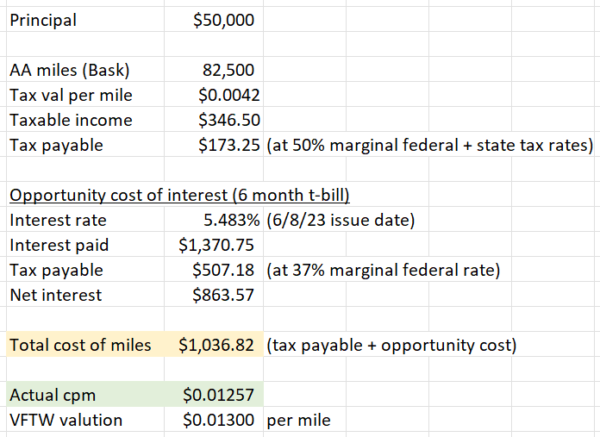
Further Observations


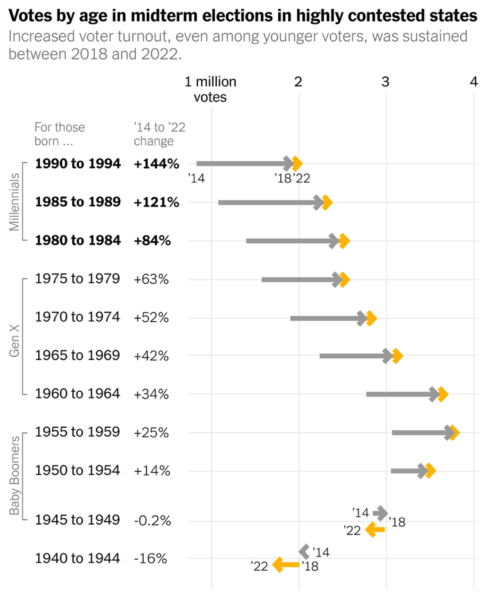
Apple Goggles
Apple’s long-awaited VR/AR headset is rumored to be launched at WWDC on Monday. Around the internet, it seems that people are skeptical whether the device will become a successful product line for Apple, but no one is willing to rule them out given their track record of taking over markets they enter (see phones, tablets, wireless earphones, watches, etc.). However, the anticipated $3,000 price tag is a barrier that will probably see the first version remain a niche object, kind of like its top of the line Pro Display XDR monitor. Let’s see what they can do with it. (Meta also announced its Quest 3 headset. I bought a Quest 2 during the pandemic but it hasn’t seen much use.)
When I was in high school in the late 90s, I remember being totally hyped for the release of Ultima Online, one of the first massively multiplayer online role-playing games (MMORPGs) that, I’m surprised to see, is still operating today. The promise it held in my mind was a persistent world that I could explore with a bunch of friends. But it was not just about exploring dungeons and killing monsters—you could do stuff like form a guild, trade goods, and even buy virtual property. This meant it could be a place you could just hang out in and chat and “build a second life” in, so to speak, in between all the adventuring. (Second Life came a few years later.) It seemed to be a great place to hang out with real life friends and friends that I had made online.
The reality was decidedly less rosy. The first issue was that things were hamstrung by technology. Broadband in Australia was in its infancy and cost prohibitive, and accessing UO over a dial-up connection led to crazy bad lag. It was unplayable. The second issue, is that even when the connection was tolerable, Britannia (the name of the world in which UO is set) wasn’t a particularly fun place to actually hang out. While clearly there were enough people who the game engaged that it has survived to this day, I don’t remember playing it for more than a few weeks even though I played a lot of computer games back then.
MMORPGs are the original metaverses and they have been around for decades. While VR is tightly bound with the metaverse (as in, a way to fully immerse yourself in one), VR has broader applications. Nonetheless, just like UO, I think the early days of consumer-accessible VR are still pretty niche. Until a few things change, I see things remaining that way (although, with Apple’s reach, even a niche offering involves a lot of people).
First, the form factor is cumbersome. Fabricated mockups of Apple’s headset show a sleek pair of ski goggles which are easier to whip on than the Quest, but there is an external battery pack which I assume needs to be clipped somewhere to your body. This adds quite a bit of friction each time you want to use it, which contrasts to the “instant on” nature of its phones, computers, etc. (I remember the old days where computers didn’t have sleep mode and it could take 3+ minutes to boot up a desktop. That made using a computer a very intentional act.)
Second, current forms of VR disconnect you from the physical world. I imagine the Apple headset will have look-through functionality, but it still involves putting something in front of your eyes—your window to the world—blocking them completely. So it may be great for games and experiencing things that aren’t possible in the real world, but will that provide widespread daily utility?
Third, are there any real world interactions that are genuinely made better by VR goggles? I certainly don’t want to have meetings at work wearing them. Maybe there are some limited applications like doing virtual walkthroughs of buildings in real estate that are more convenient (but still inferior to actually being there).
Fourth, all of Apple’s major product lines are used by all age groups. It will be interesting to see what the uptake is of older age groups. Maybe it’s me just getting older, but the Quest 2 makes me dizzy sometimes.
All that said, MMORPGs have come a long way and some of them have developed very strong communities and are actually places in which a lot of people now hang out and socialize (and sometimes meet and get married IRL). And some people even make a bit of a living through it by selling virtual goods. I have no doubt that VR will continue to evolve and grow, but similar to MMORPGs, I’m not sure it will become something all pervasive, like the smartphone, or this new generation of AI technology that’s currently set the tech world ablaze. There’s nothing wrong with that, of course, but with Apple I suppose there’s a certain weight of expectation that whatever they do will literally change the world and become ubiquitous.

Augmented reality is probably the more interesting application, but I think it demands a different form factor to find more widespread adoption. But what would that be? Google Glass was an attempt, but it looked dorky. Maybe one day we’ll be able to integrate a chip and power source into glasses that are inconspicuous. Or maybe it will be something like this, where the technology just gets out of your way altogether.
Nonetheless, Apple’s headset is still probably going to be able to do some pretty cool stuff!
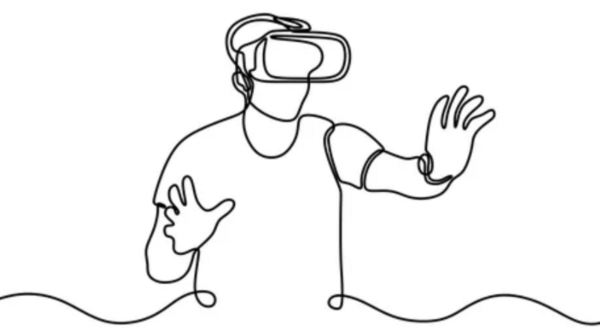
Further Observations


Soft Landing?
Inflation is coming down, but I remain skeptical that we’ll get a soft landing.
A soft landing supposes that, by keeping interest rates roughly where they are, inflation will start to moderate back down to its 2% target and low unemployment and positive productivity growth will be maintained. Paul Krugman suggests things will be more resilient than the doom and gloom suggest.
But interest rates have skyrocketed in the last 12 months, after more than a decade of ZIRP and a generation of workers who haven’t experienced an environment in which money was not cheap.
Rate rises have never occurred so quickly in history, and I don’t think they’ve had a chance to bite. The longer you keep rates at this level, the longer the situation gets worse for people and businesses who are sensitive to rate rises. People are not used to interest rates being over 1%, much less over 5%. The effects of high rates should eventually flow through in the form of increased bankruptcies, defaults, and restructurings. The regional banks aside, we haven’t seen much of that yet, but it doesn’t gel with me that whoever levered up to the gills in the last few years isn’t going to face some sort of reckoning when their interest rates have suddenly multiplied. It will take some time to play out.
We’re already seeing some signs of stress.
Credit card debt did not decline in Q1 like it normally does and delinquencies are rising. The commercial real estate market is a ticking time bomb. The regional banking crisis is still lurking in the wings.
Economic cycles have tended to consist of periods of gradual growth followed by short and sharp declines. I’m not sure why it would be different this time when the powder keg is so large. Eventually, something will spark a prolonged panic and precipitate the next recession.
And maybe we’ll see cycles that are more volatile — a sudden slowdown could push the Fed to cut rates back down to zero again in a knee jerk reaction, and you end up with an economy in pilot-induced oscillation (“when the airplane begins a departure from the desired flight path, and the pilot applies inappropriate, excessive or mis-timed corrections that result in ever-increasing excursions that threaten to force the airplane out of control”).
Perhaps something at play is that things happen so fast these days, and attention spans are short. The lack of bad things happening quickly might be interpreted as a sign that the bears are forever crying that the sky is falling, but we’re actually on a path to recovery.
I just don’t see it happening.
Further Observations
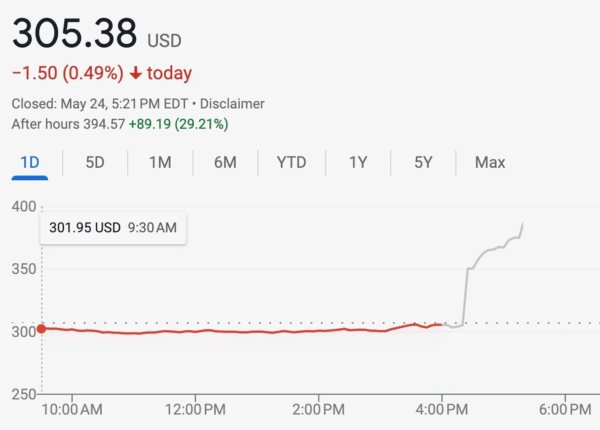
The Debt Ceiling
The Republicans are playing chicken with the debt ceiling again. It’s a travesty how the system works here – namely, that the budget is approved by Congress first, and then as a separate step, Congress has to approve raising the debt ceiling so that the U.S. Treasury can issue new debt to pay for the spending that Congress already approved. This process is almost unique in the world. (Denmark is the other country that works this way, but they don’t practice brinkmanship over there.)
It’s almost impossible to imagine Congress actually taking things over the precipice, but no one is 100% absolutely sure that won’t happen, even though the consequences would be catastrophic if the U.S. were to default on its debt.
“X-date” is the deadline where the government effectively runs out of money. It fluctuates because it depends on day-to-day tax revenue collected and spending, but “as early as June 1” is the guidance that the Treasury has given.
Interestingly, the market is not reacting like it did in 2011, staying relatively buoyant despite June 1 being a little over a week away. This means the market is expecting things will be resolved before x-date. It has been observed that this means that insurance against a debt default is selling for cheap. This insurance comes in the form of put options on the S&P index (via an S&P index ETF), or alternatively call options on the price of gold or against the VIX (volatility index).
One potential solution to the crisis, where the U.S. Mint mints a $1 trillion coin and deposits it in the Federal Reserve’s Treasury account, has been taken off the table by Treasury Secretary Janet Yellen. As explained by Wikipedia: “The concept of striking a trillion-dollar coin that would generate one trillion dollars in seigniorage, which would be off-budget, or numismatic profit, which would be on-budget, and be transferred to the Treasury, is based on the authority granted by Section 31 U.S.C. § 5112 of the United States Code for the Treasury Department to “mint and issue platinum bullion coins” in any denominations the Secretary of the Treasury may choose. Thus, if the Treasury were to mint one-trillion dollar coins, it could deposit such coins at the Federal Reserve’s Treasury account instead of issuing new debt.”

Further Observations
Look at that inverted yield curve:
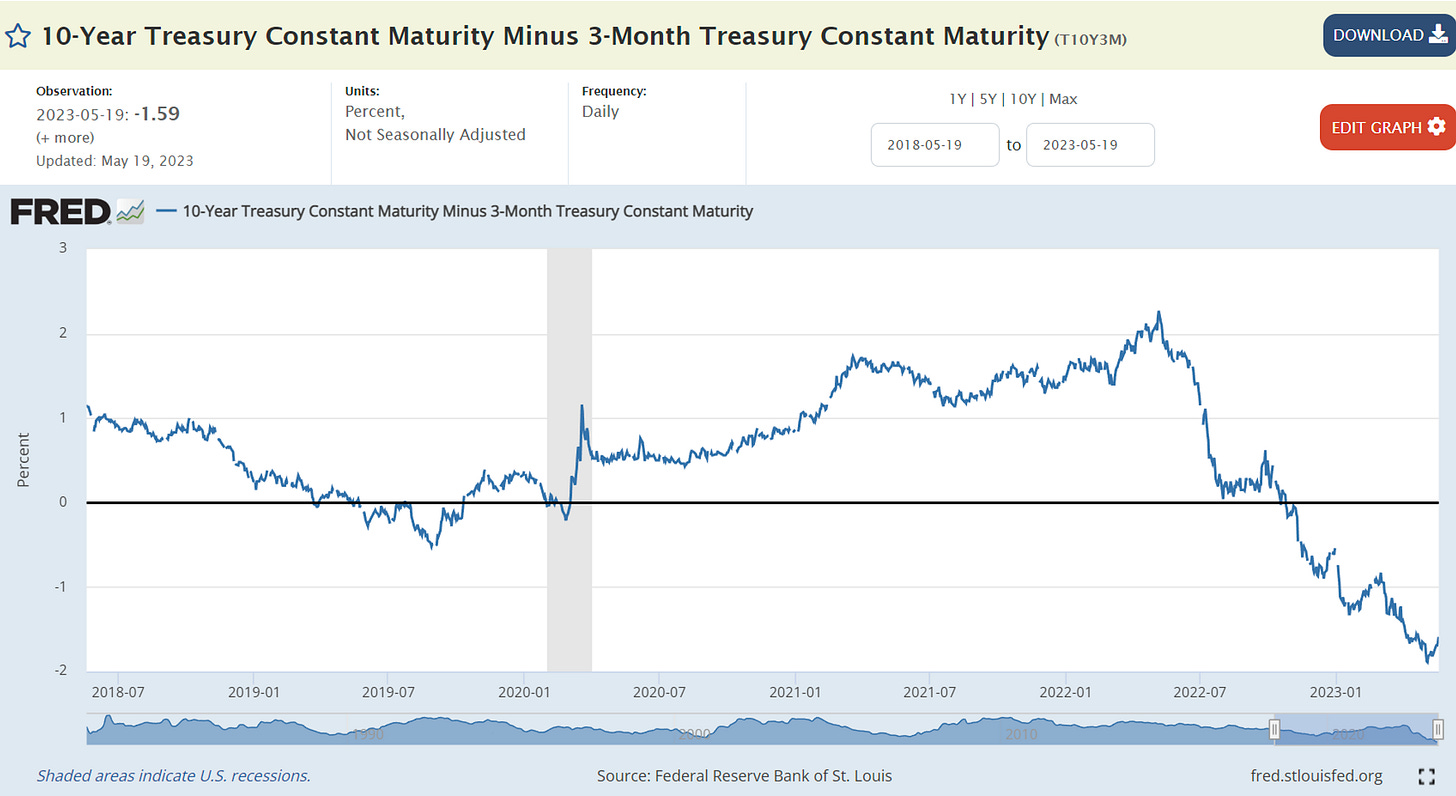
Now let’s zoom out further…
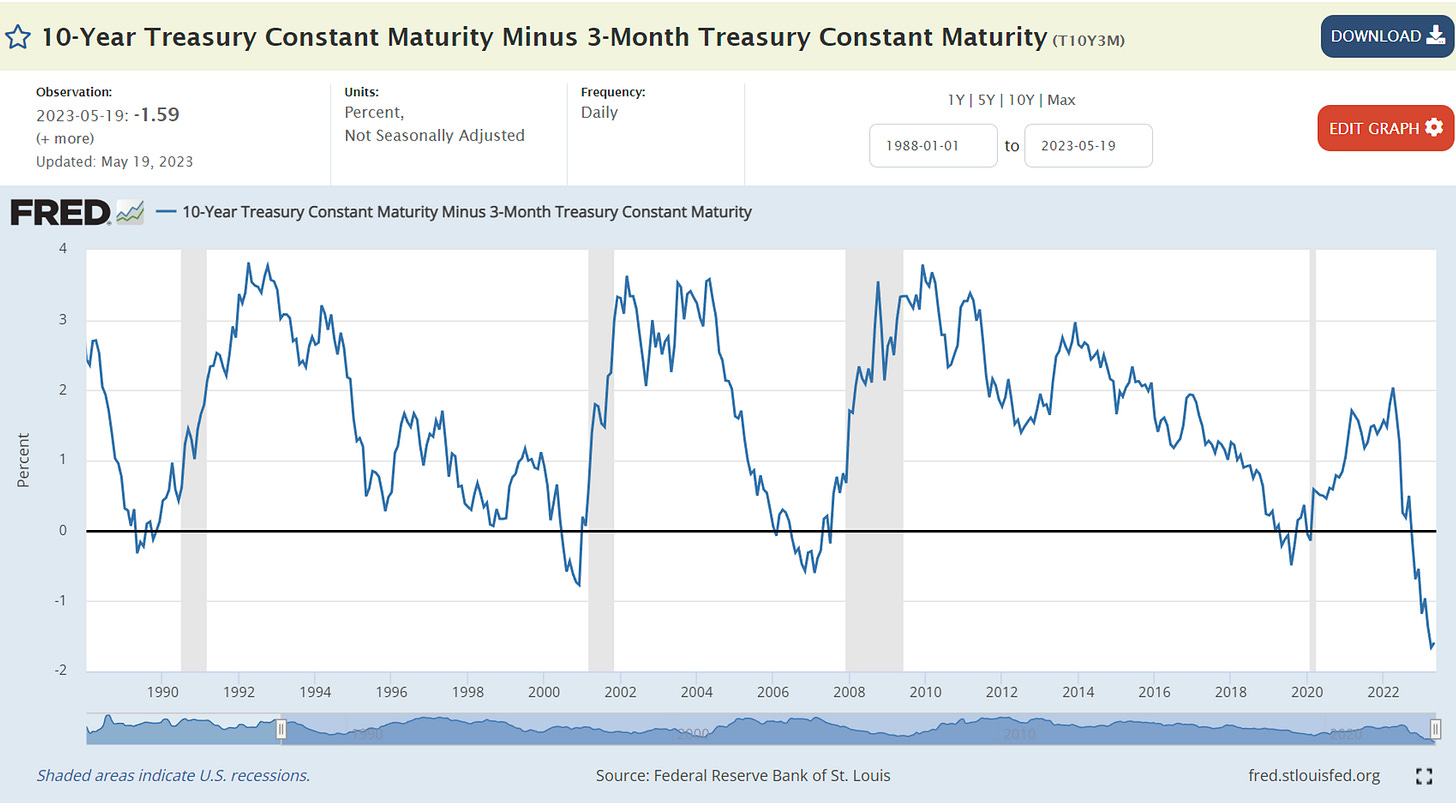
Mycology
I’m somewhat embarrassed to have only discovered the amazing library system in our part of the Bay Area. There is a small offshoot branch of the main city library about 2 minutes’ drive from our house that has a great selection of new releases and children’s books. And, through that library, I can request books online from any of the dozen or so other libraries in the same system. They ship the book to my local branch and notify me when it’s ready for pickup. They seem to get all the major new releases. Self-checkout is simple — they have a neat scanning machine where you pile all the books you’re checking out on top of the checkout surface. The machine detects all of them and deactivates the security tags in one fell swoop. The books are initially lent for 3 weeks, but as long as no one has a hold placed on them, the library will automatically renew them for you. They let you check out 50 books at a time! I visit with my daughter every second Saturday.
Anyway, the library is not what this post is actually about. While at the library, I picked up a field guide to identifying mushrooms (on a total whim) and learned a few things, including what a “spore print” was. Basically, it’s a method of identifying mushrooms by observing the attributes of the spores they drop, such as their color and drop pattern.
I tried to make one. It’s easy: I bought a portabella mushroom from the supermarket, cut the stem, placed it gills down on a piece of paper and covered it overnight with a glass container. The next day, you get your spore print on the paper. (And if you spray it with a fixative, like hair spray, you have something you can hang on the wall.) Below was the result:
I also learned that portabella mushrooms are the same species of mushrooms as white mushrooms, button mushrooms, and cremini (brown) mushrooms — all supermarket staples.
Mushrooms are just one part of a fungus. Similar to an apple on an apple tree, mushrooms are the fruiting body for the underlying mycelium (a threadlike network that exists in soil or a substrate like wood) that makes up the rest of the fungus. Mushrooms are the way fungi reproduce, since they are basically receptacles for dispersing spores.
Mushrooms are incredibly diverse, but I was particularly intrigued by giant puffballs. They can grow larger than a soccer ball and, for a limited span of their lifecycle, are edible!
Further Observations
Further Observations
If you think you’re having a hard week, just be glad you’re not doing this:
TikTok
I was asked for my thoughts on TikTok. My thoughts are pretty simple.
The potential for social media to do harm in various forms has been recognized for many years now. Ad-driven social media business models rely on engagement and attention, and their algorithms optimize for that. That often means displaying content that is provocative or even incendiary. It leads users down rabbit holes and into echo chambers. It influences emotions and perspectives and messes with adults psychologically. For kids, it’s even worse. I believe it can really mess up kids during their most formative years — especially if they are left with it for hours unsupervised, each day. (Gen Z believes it too. See “Do the Kids Think They’re Alright?” in the Articles section below.)
TikTok has incredible engagement and reach. People spend hours on it each day. It has over 100 million users in the U.S. As a business, I wish I could invest in it. As a product, I’m not a user. But some of the content on there and the creativity on display is pretty incredible.
Overlaid on top of all of this is the fact that TikTok is owned by ByteDance, a $300B Chinese company. Chinese companies (and particularly tech companies, as of late) are vulnerable to interference by the Chinese government far beyond a level that exists in the U.S. The Chinese government even has a board seat and some ownership of a key ByteDance company. (ByteDance also has several other apps that rank very well in U.S. app stores.)
Facebook has been used by domestic and foreign actors to spread misinformation, influence hearts and minds, and generally damage the fabric of society.
It then doesn’t take a lot of imagination to realize that if the company responsible for the algorithm itself were trying to set an agenda (in this case, at the behest of the CCP), it could do so by directly altering the algorithm in a way that could have much more significant impact than by external actors trying to game the system. It’d be a good way to subtly spread propaganda or stoke social discord in a mostly inscrutible way.
Data surveillance is also an issue, but that doesn’t seem as significant. The U.S. government certainly has the ability to covertly compel production of certain data from private companies. You’d also think someone would notice if the apps were trojan horses for spying on whatever else is happening on a user’s device.
TikTok is banned within China itself, which is pretty telling.
The result is a national security threat that seems very real. It’s hard to see another outcome from this situation other than for TikTok to be spun, or banned. I won’t be sad if either of those things happen.
Some may argue that banning TikTok would be hypocritical of the U.S. The U.S. regularly decries China for muscling out U.S. tech companies from the Chinese market — only to threaten to turn around and do the same thing. This is a whataboutism-type argument which doesn’t respond to, nor undermine, the genuine concerns above. Nor does it undermine the notions of sovereignty and what’s in the national interest that allow countries to engage in this behavior. It’s not ideal, but there’s no reciprocity here.

Further Observations
